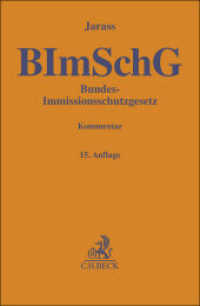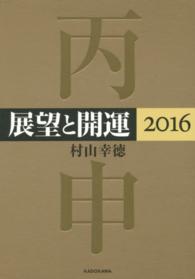Full Description
Drawing on work from both eminent and emerging scholars in translation and interpreting studies, this collection offers a critical reflection on current methodological practices in these fields toward strengthening the theoretical and empirical ties between them. Methodological and technological advances have pushed these respective areas of study forward in the last few decades, but advanced tools, such as eye tracking and keystroke logging, and insights from their use have often remained in isolation and not shared across disciplines. This volume explores empirical and theoretical challenges across these areas and the subsequent methodologies implemented to address them and how they might be mutually applied across translation and interpreting studies but also brought together toward a coherent empirical theory of translation and interpreting studies. Organized around three key themes—target-text orientedness, source-text orientedness, and translator/interpreter-orientedness—the book takes stock of both studies of translation and interpreting corpora and processes in an effort to answer such key questions, including: how do written translation and interpreting relate to each other? How do technological advances in these fields shape process and product? What would an empirical theory of translation and interpreting studies look like? Taken together, the collection showcases the possibilities of further dialogue around methodological practices in translation and interpreting studies and will be of interest to students and scholars in these fields.
Contents
Table of Contents
Chapter 1. Reuniting the sister disciplines of Translation and Interpreting Studies
(Bart Defrancq, Joke Daems and Lore Vandevoorde)
Part I. The Target Text
Chapter 2. Grammatical optionality in translated vs. non-translated texts: A multifactorial corpus analysis of that/zero alternation in English using the MuPDAR approach (Gert De Sutter and Eline Vermeire)
Chapter 3. The mechanisms behind increased explicitness in translations
A multifactorial corpus investigation of the om-alternation in translated and original Dutch (Amélie Van Beveren, Gert De Sutter and Timothy Colleman)
Chapter 4. Collocations in non-interpreted and simultaneously interpreted English: a corpus study (Daria Dayter)
Chapter 5. An approach for identifying problem solving activities in post-editing and translation from scratch (Jean Nitzke)
Chapter 6. Linking words in inter- and intralingual translation - combining corpus linguistics and key-logging data (Marta Kajzer-Wietrzny)
Chapter 7. Quality according to Language Service Providers: The Case of Post-edited Machine Translation (Gys-Walt van Egdom and Mark Pluymaekers)
Part II. The Source Text
Chapter 8. Transitional probability effects on predictive processing in an SI task created in the lab (Ena Hodzik)
Chapter 9. Automatization in translation behavior: Evidence from a translation experiment for the language pair German-English (Jonas Freiwald, Arndt Heilmann, Tatiana Serbina and Stella Neumann)
Part III. The Translator and the Interpreter
Chapter 10. Exploring Linguistic Differences between Novice and Professional Translators with Text Classification Methods (Ekaterina Lapshinova-Koltunski)
Chapter 11. Language conflict resolution and behavioural executive control measures in simultaneous interpreting (Laura Keller, Alexis Hervais-Adelman and Kilian Seeber)
Chapter 12. Disfluencies in simultaneous interpreting, a corpus-based study with special reference to sex (Camille Collard and Bart Defrancq)
Part IV. Prospects
Chapter 13. Converging evidence in empirical interpreting studies: peculiarities, paradigms and prospects (Junying Liang and Qianxi Lv)
Chapter 14. Converging what and how to find out why: An outlook on empirical translation studies (Haidee Kotze)








